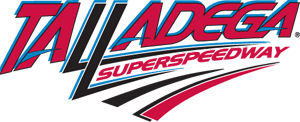Test Time On A Restrictor Plate Track Proves To Be Valuable Resource For Teams
DAYTONA BEACH, Fla. (Oct. 20, 2011) – For the second time this week, NASCAR Sprint Cup Series teams tested Electronic Fuel Injection on track, as 10 cars whirled around the 2.66-mile high banks of Talladega Superspeedway Thursday.
Ten cars turned laps, including two teams from Roush Fenway Racing and Richard Childress Racing, and one team each from Hendrick Motorsports, Earnhardt-Ganassi Racing, Stewart-Haas Racing, Michael Waltrip Racing, Penske Racing and Joe Gibbs Racing. Teams also tested EFI last Monday at Charlotte Motor Speedway. Plans call for the full implementation of EFI in the NASCAR Sprint Cup Series beginning with the 2012 season.
Teams opted to test with a 7/8″ restrictor plate size, the same size plate openings used at last April’s NASCAR Sprint Cup Series event at Talladega. NASCAR increased the restrictor plate opening by 1/64″ for this weekend’s event, with teams preparing and practicing with a 57/64″ size plate starting Friday.
“The test went really smooth,” said Paul Menard (No. 27 Serta Menards Chevrolet), the 2011 Brickyard 400 winner. “I had no issues at all with the motor. I think they have worked through the growing pains and we have a really good product right now. If we had to go racing with the Electronic Fuel Injection right now, we’d feel pretty comfortable with it.”
Robin Pemberton, NASCAR vice president of competition, says NASCAR continues to be pleased with the progress the teams have shown with the EFI.
“It was important that we tested on a superspeedway and the teams will be able to use this data in preparation for Speedweeks in 2012,” said Pemberton. “We have one more test scheduled at Martinsville (Oct. 31) and then we will be gearing up for Daytona in January. We’re confident that with the partners we’ve selected, we will continue to have a level field of competition throughout the garage.”
Pemberton also said the teams experimented with a smaller spoiler over the last 30 minutes of the test session Thursday.
“Some of the early feedback that we received was that it might have been a little harder to hook up in the draft and a little harder to back into the car behind you,” said Pemberton. “We’ll see what the information and data shows us.”
Fuel injection is expected to positively impact the fuel mileage in the NASCAR Sprint Cup cars. To what extent, however, is something that will only be determined with continued R&D, says Joey Logano (No. 20 Home Depot Toyota).
“That’s a great question,” said Logano, when asked how much of an increase in fuel mileage the cars might receive next season. “Once the teams figure out the fuel maps and begin to perfect the fuel injection system even more, I think we’ll have a much better understanding of that.”
Trevor Bayne, the 2011 Daytona 500 winner, drove one of the Roush-Fenway cars today and posted the fastest lap of the session at 194.444 miles per hour.









